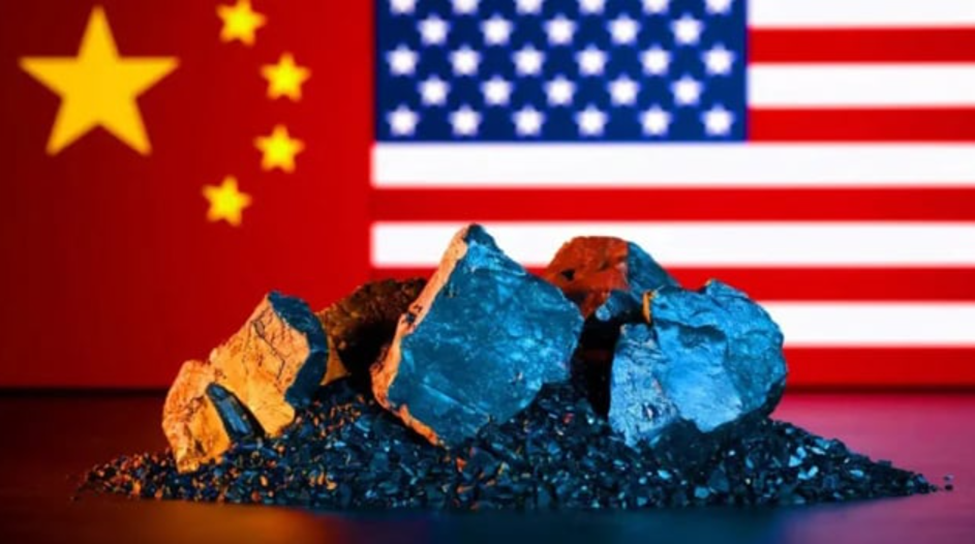Closer India-China ties positive for both: ADB Chief Economist Albert Park
- InduQin
- Oct 9
- 4 min read

ADB Chief Economist Albert Park highlights India’s robust fiscal position despite GST rate cuts, projecting 6.5% GDP growth for FY26-27. He warns of downside risks from geopolitical tensions, high US tariffs, and rising oil prices but sees opportunities in export diversification. Park praises India’s infrastructure investments, GST reforms, and rural income growth, urging trade liberalization, regulatory reforms, and human capital development. Closer India-China ties are positive, though AI’s job impact remains uncertain.
Asian Development Bank (ADB) Chief Economist Albert Park says the fiscal position of the government seems robust despite the cuts in rates of goods and services tax (GST). In an interview on the sidelines of the Kautilya Economic Conclave in New Delhi, Park tells Ruchika Chitravanshi and Asit Ranjan Mishra the 50 per cent tariffs of the United States (US) offer opportunities to India to diversify its export destinations. Edited excerpts:
The ADB has projected 6.5 per cent growth in gross domestic product (GDP) for India in FY26 and FY27. Are there more upside or more downside risks to these projections?
There are both, but we’re worried more about the downside risks because of the uncertain trade and tariff environments, and other geopolitical risks related to conflicts in Europe and West Asia. Higher oil prices may add a headwind for India. And the 50 per cent tariff by the US is high. Even though only a small share of Indian GDP depends on exports to the US, it will have an effect. It may make foreign investors have a rethink about, let’s say, a China plus one strategy; or investment in areas that would be subject to US tariffs or create risks to supply chains that end up in the US.
How serious is the tariff risk to the Indian economy?
It is the main reason for the downgrading of our forecast this year and next year. It depends on how much those tariffs will kill demand for India’s exports. There are other opportunities to diversify India’s export destinations. There are ways to adjust to the shock. We know those will have an effect on textiles and garments, jewellery, and some electronics that have some higher value-added components.
Do you see the US tariffs as a big risk in attracting investment?
In the sectors affected directly, that will have an effect on expected sales revenue and so it will affect investment. We probably need to study the whole supply-chain linkages harder.
In your growth projections, are you factoring in some reforms India has taken up, such as GST rate rationalisation?
The GST reforms are a stimulant for the economy, and so are the income-tax exemptions. You do lose a bit of revenue, so there are costs for the government. But overall, the fiscal position of the government in India seems robust. The fiscal deficit as a share of GDP is projected to decline next year despite these reforms. That was a big reason for the upgrade in credit ratings.
How concerned are you about private-sector investment?
The country is doing well on demand creation. There’s been strong investment by the government in infrastructure, and robust consumer demand. We’ve had a good monsoon this year, which helps rural incomes to increase. So that’s supportive of growth and investment. Conditions are positive for strong growth in India and private-sector investment.
There are indications of normalisation in economic relations between India and China. Both sides have resumed direct flights. How do you see the situation evolving?
From an economic standpoint, it’s great news. China is the largest economy in the region. It has great capabilities in important frontier technologies, and in efficiency in manufacturing processes. Closer economic ties between India and China are going to be positive for both sides.
But the restrictions that India had put on Chinese investment still exist. So do you think those should be relaxed?
At the ADB, we’ve always been strong proponents of open, multilateral trade and investment. I have felt for a while that India should be more aggressive in liberalising both import and foreign direct investment. India needs to continue working hard to reduce red tape, create a healthy business environment, and make it easy for foreign investors to come. The lessons from history are clear that you have to participate in globalisation, and embrace it to get its benefits.
GST 2.0 is one major reform carried out by the government. What are the other reforms you would like to see in the near term?
Now that trade liberalisation is on the table and is being negotiated, I was hoping that it would encourage the government to move forward with trade liberalisation, especially in import. You need to import cheap intermediate inputs to be competitive in exporting goods. That’s part of the equation of being more successful in the export sector. I think there are regulatory issues that inhibit foreign investment. And you often have to deal with every state to figure out what is expected to get the permissions you need to invest.
There’s still a lot of work to do on human capital -- in basic education and also in the skills training that are needed by producers. The government needs to keep investing in infrastructure.
Are you seeing an impact of artificial intelligence (AI) on job creation?
Whether using AI is generating employment or not, I think it may be a bit too early to get a good reading of the situation.
https://www.business-standard.com/economy/interviews/closer-economic-ties-between-india-and-china-are-positive-for-both-sides-125100301121_1.html







Comments